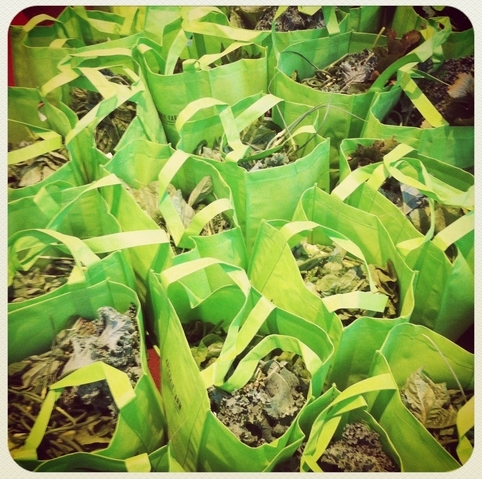I am thinking about spring. Although it is still several weeks away, there are decisions to make that will affect what grows on Katchkie Farm in 2015. Despite the frozen earth, now is the time our planning begins. The seed orders went in last week, including over 60 varieties from arugula and eggplant to king kale, tomatoes and zucchini - over 1 million individual seeds.
But the most critical farm activity starting now is the launch of CSA sign-up season. CSA - Community Supported Agriculture - is better recognized as the veggie bag members get weekly, filled with whatever was harvested on the farm. We are in the process of signing up our 500 members - not a simple task, yet central to the financial health of the farm.
For us at Katchkie Farm, and at hundreds of farms across the country, CSA is the economic anchor. Why? Members pay for their "shares" before the growing season - providing farmers with money to buy seeds, ready fields and equipment- all before a single veggie has grown. CSA defines a commitment that will weather a bumper crop season (when members benefit) or withstand the occasional disruption due to hurricane, hail, blight or bug (less to share). It fosters a connection between consumer and grower that transcends marketing or e-commerce.
The advent of two trends threaten to disrupt the CSA model. The first is the aggregator/middleman model, which collects crops from different farms and resells directly to consumers. Retail aggregators include models like Good Eggs or Farmigo, allowing buyers to skip the vegetables they don't like (no okra please) and get the ones they prefer (more kale or varietal tomato). In season, FreshDirect not only offers a wide selection of local options (conventional and organic) but a farmer's box of "best picks" of the week for a CSA-like experience. No doubt, Amazon will be right behind. Depending on your location, Peapod, Whole Foods and others with online shopping will worm their way into the farm fresh market.
In the bricks and mortar world, merchants are responding to the demand for local food and promote an array of items, from fruits and vegetables to cheese, meat, fish and beverages as well. Here too, there is abundant marketing about local farm connections - often a source of controversy as there is little transparency and no regulation.
There are more local vegetables everywhere with more product choice, ordering flexibility and greater accessibility (if you are in the delivery zone). This is what the food movement has been advocating and finally, businesses have figured out how to make convenient and profitable. Shopping for local vegetables and fruits will be like shopping for anything else we buy - you get what you chose.
Is that a problem? Yes and no. First of all, only actual CSAs should be called CSAs. It signifies a specific operating model and financial arrangement, one that is most supportive of and favorable to the farmer. It should not be used by an aggregator or retail organization to describe a selection of seasonal produce.
Although CSA requires upfront payment, many offer a payment schedule as well as reduced prices for low-income communities. Once you factor in the amount of produce over a 22-week period, the cost is generally cheaper than buying via retail outlets.
But I think there is more to this conversation than convenience or price or selection alone. At the core of CSA is an understanding of how growing food (farming) happens. It involves a financial commitment to the farm before delivery - that is an act of faith. It acknowledges the acceptance of circumstances beyond our control - weather, climate change and natural impacts. It embraces the joy of surprise, stimulating conversation and culinary exploration. It gets people cooking, swapping, learning, and talking.
Above all else, it is belonging to a community that celebrates the same inexplicable "farm joy" you feel. It's having a farm to call your own, a farmer to learn from and a place to go if you want to get into the dirt. It transforms the way you think about a rain on a summer's day - it's good for the crops.
Change in distribution of food from farms to homes is happening and there is room for multiple of models. More healthy, accessible and delicious options benefit everyone. I just hope that the humility that comes with understanding how precious our food is will be sprinkled in every bag and box.
This piece was originally published in Our Town.
